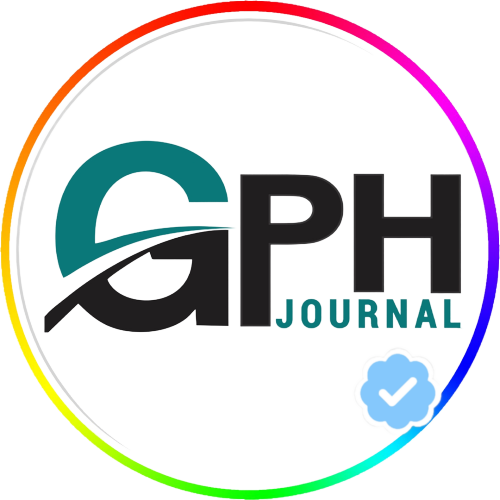SERUM TRACE ELEMENTS PICTURE IN SICKLE CELL ANAEMIA: A COMPARATIVE STUDY OF HBSS AND HBAA INDIVIDUALS AT A TEACHING HOSPITAL IN SOUTHWEST NIGERIA
Abstract
Background: Sickle cell anemia (SCA) is a chronic hemoglobinopathy associated with oxidative stress and altered trace element metabolism. This study evaluates the levels of key trace elements in SCA patients and their potential clinical implications.
Methods: A cross-sectional comparative study was conducted at Ekiti State University Teaching Hospital. A total of 111 participants, including 74 SCA patients (37 in steady state and 37 in crises) and 37 age- and sex-matched healthy controls (HbAA), were recruited. Serum copper, zinc, magnesium, selenium, and chromium levels were measured using validated spectrophotometric and colorimetric methods. Data were analyzed using SPSS version 20, with statistical significance set at p ≤ 0.05.
Results: SCA patients had significantly higher mean serum copper levels than controls (p < 0.001), while zinc, magnesium, selenium, and chromium levels were significantly lower (p < 0.001). Correlation analysis revealed a significant negative correlation between copper and zinc (r = -0.875, p < 0.001) and positive correlations between zinc and magnesium (r = 0.925, p < 0.001), selenium (r = 0.94, p < 0.001), and chromium (r = 0.918, p < 0.001).Conclusion: This study highlights significant trace element imbalances in SCA patients, suggesting potential micronutrient deficiencies. Further research is needed to assess the clinical impact and potential benefits of targeted nutritional interventions in SCA management.
Downloads
References
Alabi, A., Ogundeyi, M., Mautin, G., & Ekundayo, A. (2023). Psychosocial Burden and Coping Abilities of Caregivers of Children with Sickle Cell Disease Attending Government-Owned Tertiary Health Care Facilities in Ogun State, Southwest Nigeria. Babcock University Medical Journal, 6(2), 252–266.
Ali, E. H. (2022). Haematological and nutritional status of Sudanese women with sickle cell trait and anaemia: Does sickle cell trait compromise birth outcomes? [PhD Thesis, London Metropolitan University]. https://repository.londonmet.ac.uk/9055/
Delesderrier, E., Cople-Rodrigues, C. S., Omena, J., Kneip Fleury, M., Barbosa Brito, F., Costa Bacelo, A., Correa Koury, J., & Citelli, M. (2019). Selenium status and hemolysis in sickle cell disease patients. Nutrients, 11(9), 2211.
Gammoh, N. Z., & Rink, L. (2017). Zinc in infection and inflammation. Nutrients, 9(6), 624.
Garadah, T. S., Hassan, A. B., Jaradat, A. A., Diab, D. E., Kalafalla, H. O., Kalifa, A. K., Sequeira, R. P., & Alawadi, A. H. A. (2015). Predictors of Abnormal Bone Mass Density in Adult Patients with Homozygous Sickle-Cell Disease. Clinical Medicine Insights: Endocrinology and Diabetes, 8, CMED.S24501. https://doi.org/10.4137/CMED.S24501
Gueye Tall, F., Martin, C., Ndour, E. H. M., Faes, C., Deme Ly, I., Pialoux, V., Connes, P., Gueye, P. M., Ndiaye Diallo, R., & Renoux, C. (2020). Influence of oxidative stress biomarkers and genetic polymorphisms on the clinical severity of hydroxyurea-free senegalese children with sickle cell anemia. Antioxidants, 9(9), 863.
Inusa, B. P., Hsu, L. L., Kohli, N., Patel, A., Ominu-Evbota, K., Anie, K. A., & Atoyebi, W. (2019). Sickle cell disease—Genetics, pathophysiology, clinical presentation and treatment. International Journal of Neonatal Screening, 5(2), 20.
Khan, S. A., Damanhouri, G., Ali, A., Khan, S. A., Khan, A., Bakillah, A., Marouf, S., Al Harbi, G., Halawani, S. H., & Makki, A. (2016). Precipitating factors and targeted therapies in combating the perils of sickle cell disease—A special nutritional consideration. Nutrition & Metabolism, 13(1), 50. https://doi.org/10.1186/s12986-016-0109-7
Livingstone, C. (2015). Zinc: Physiology, Deficiency, and Parenteral Nutrition. Nutrition in Clinical Practice, 30(3), 371–382. https://doi.org/10.1177/0884533615570376
Nwabuko, O. C., Onwuchekwa, U., & Iheji, O. (2022). An overview of sickle cell disease from the socio-demographic triangle-a Nigerian single-institution retrospective study. Pan African Medical Journal, 41(1). https://www.ajol.info/index.php/pamj/article/view/238788
Obeagu, E. I., Adias, T. C., & Obeagu, G. U. (2024). Advancing life: Innovative approaches to enhance survival in sickle cell anemia patients. Annals of Medicine and Surgery, 86(10), 6021–6036.
Ohemeng, A., & Boadu, I. (2018). The role of nutrition in the pathophysiology and management of sickle cell disease among children: A review of literature. Critical Reviews in Food Science and Nutrition, 58(14), 2299–2305. https://doi.org/10.1080/10408398.2017.1319794
Ojewunmi, O. O. (2017). Biomarkers and Genetic Polymorphisms Associated with Stroke Risk in Children with Sickle Cell Anaemia in Lagos, Nigeria [PhD Thesis, University of Lagos (Nigeria)]. https://search.proquest.com/openview/804c3e837cd589430e094d8673c9958e/1?pq-origsite=gscholar&cbl=2026366&diss=y
Okocha, E. C., Manafa, O. P., Aneke, C. J., Onwuzuruike, E. C., Ibeh, C. N., & Chukwuma, O. G. (2017). Serum superoxide dismutase activity: A predictor of disease severity in nigerian sickle cell anemia patients in steady state. Medical Journal of Dr. DY Patil University, 10(5), 406–411.
Olaniyi, J. A., Akinlade, K. S., Atere, A. D., & Arinola, O. G. (2014). Serum iron status and haematological profiles in adult Nigerian sickle cell anaemia patients. International Journal of TROPICAL DISEASE & Health, 4(8), 917–927.
Onukwuli, V. O., Chinawa, J., Eke, C. B., Nwokocha, A. R., Emodi, I. J., & Ikefuna, A. N. (2018). Impact of zinc on sexual maturation of female sickle cell anemia (SCA) children in Enugu, Southeast Nigeria. Pediatric Hematology and Oncology, 35(2), 145–155. https://doi.org/10.1080/08880018.2018.1469706
Pavan, A. R., Terroni, B., & Dos Santos, J. L. (2024). Endothelial dysfunction in Sickle Cell Disease: Strategies for the treatment. Nitric Oxide. https://www.sciencedirect.com/science/article/pii/S1089860324000740
Pecker, L. H., & Little, J. (2018). Clinical Manifestations of Sickle Cell Disease Across the Lifespan. In E. R. Meier, A. Abraham, & R. M. Fasano (Eds.), Sickle Cell Disease and Hematopoietic Stem Cell Transplantation (pp. 3–39). Springer International Publishing. https://doi.org/10.1007/978-3-319-62328-3_1
Qureshi, G. A., Memon, S. A., Memon, A. B., Ghouri, R. A., Memon, J. M., & Parvez, S. H. (2005). The emerging role of iron, zinc, copper, magnesium and selenium and oxidative stress in health and diseases. Biogenic Amines, 19(2), 147.
Author(s) and co-author(s) jointly and severally represent and warrant that the Article is original with the author(s) and does not infringe any copyright or violate any other right of any third parties, and that the Article has not been published elsewhere. Author(s) agree to the terms that the GPH Journal will have the full right to remove the published article on any misconduct found in the published article.























